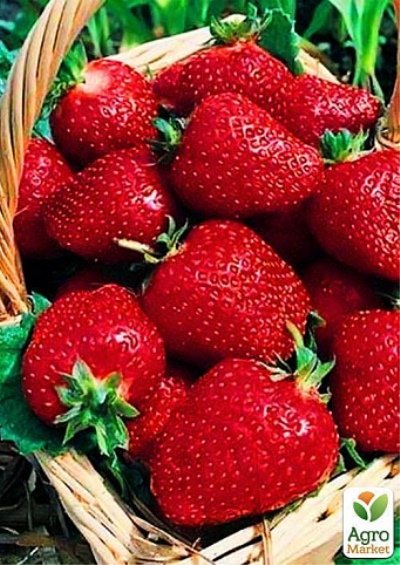
- Authors: Nova Scotia
- Name synonyms: Wendy
- The size: large
- Weight: 30-35 gr
- Yield rate: high
- Yield: 1.5 bush per bush
- Ripening terms: ultra early
- Advantages: increased keeping quality, high tasting rates
- Appointment: fresh consumption
- Description of the bush: well formed
Wendy's strawberry variety is bred by breeders from Nova Scotia. This is a fairly new variety that has not yet achieved popularity in Russia, but more and more farmers are paying attention to the benefits of such strawberries and choosing them for growing on their farms.
Description of the variety
The bush has a height of 20-30 cm, is well formed, green leaves develop on it.
Ripening terms
The plant begins to bloom in March-April, so Wendy is classified as a very early ripening variety.
Yield
The variety has a high yield. One bush produces 1.5 kg of fruit during the season.
Berries and their taste
The berries are colored red and have the same large size, their weight is 30-35 g. At the same time, they do not become smaller until the end of the fruiting season. The flesh of the berries is juicy, elastic, the aroma is well felt.
Wendy berries are usually consumed fresh, they are characterized by high tasting performance. And also the advantages include increased keeping quality and good transportability.
Growing features
It is a versatile strawberry with both winter hardiness and drought tolerance. Recommended for growing in southern regions with temperate and mild climates. Requires an average level of care.




Site selection and soil preparation
The optimal planting time is the end of July. During this time, the seedlings will adapt and will harvest the next year. For planting, choose a well-lit area, but hidden from drafts. The plant develops best in soil with neutral acidity - 5.2-5.5 pH.
A few weeks before planting, dig up the ridge and add humus (1 bucket) and wood ash (200 g per 1 sq. M). Maintain a distance of 30 cm between the bushes, and 40-50 cm between the rows.

Pollination
Wendy's strawberries are mainly grown outdoors and are therefore naturally pollinated by wind and insects.
Top dressing
Fertilization occurs in stages.
After the snow melts, the plants are treated with nitrogen compounds. You can use mullein, bird droppings, urea, nettle tincture. These substances contribute to the formation of green mass.
During the flowering period, complex mixtures are relevant, as well as fertilizing with potassium or boron content.
After fruiting, products with a minimum amount of nitrogen are recommended. Superphosphates or wood ash can be used.

One of the important techniques in strawberry care is feeding. Regular fertilization guarantees a rich harvest. There are several different ways to feed strawberries, and each of them is designed for a specific period of plant development. During flowering, fruiting and after it, feeding should be different.
Frost resistance and the need for shelter
It is important to prepare the plant for winter. To do this, remove old and damaged leaves, and abundantly moisturize the ridge. The Wendy variety needs insulation; nonwovens, straw, spruce branches are suitable as a shelter. The need for shelter is explained by a very early ripening period: without protection, the first flowers can freeze out during repeated frosts.

Diseases and pests
The Wendy variety is highly resistant to late blight and powdery mildew. However, prevention against spotting will not be superfluous. For example, in the spring you can use Bordeaux liquid 1%, before the beginning of the growing season, 3% composition is suitable, in the beginning of autumn, re-processing is required. To protect against pests, you can use "Fitoverm" or "Fitosporin".

Strawberries are often subject to many dangerous diseases that can seriously undermine its condition. Among the most common are powdery mildew, gray mold, brown spot, anthracnose, and verticillosis. Before buying a variety, you need to inquire about its disease resistance.
Reproduction
The variety forms a large number of whiskers, so it is easiest to propagate Wendy's strawberries with a whisker. For this, choose healthy, strong bushes, leave a few mustaches on them, substitute containers with a substrate under the sockets of the 1st and 2nd order, pinch the continuation of the mustache. You can plant seedlings in a permanent place at the end of July using the transshipment method.
Reviews
Most of all, gardeners appreciate the taste of the Wendy variety. Among the advantages, there is a high yield, the same size of fruits during the season. Of the minuses, susceptibility to verticillium is noted.



















































































